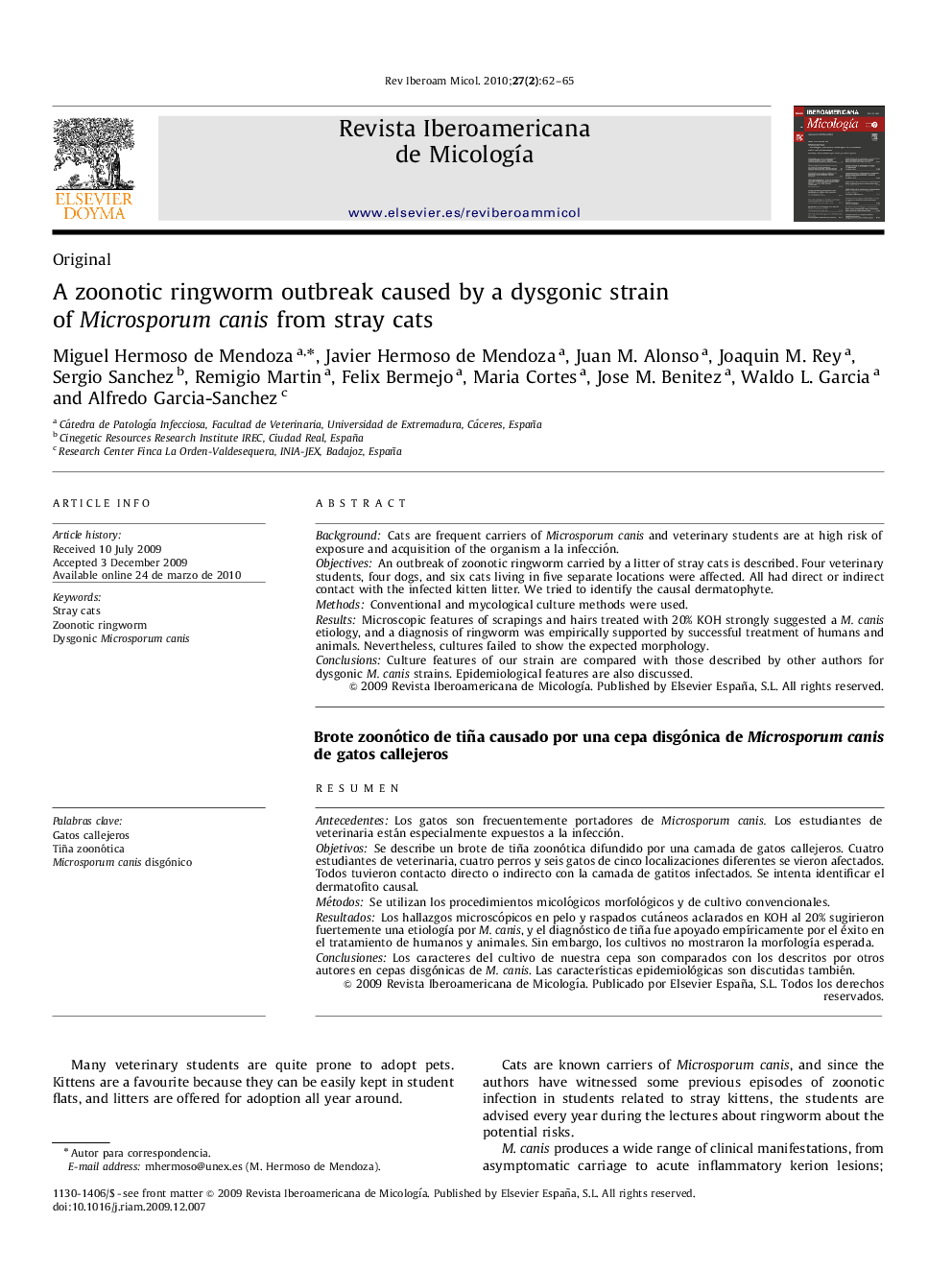| کد مقاله | کد نشریه | سال انتشار | مقاله انگلیسی | نسخه تمام متن |
|---|---|---|---|---|
| 3419045 | 1225796 | 2010 | 4 صفحه PDF | دانلود رایگان |

BackgroundCats are frequent carriers of Microsporum canis and veterinary students are at high risk of exposure and acquisition of the organism a la infección.ObjectivesAn outbreak of zoonotic ringworm carried by a litter of stray cats is described. Four veterinary students, four dogs, and six cats living in five separate locations were affected. All had direct or indirect contact with the infected kitten litter. We tried to identify the causal dermatophyte.MethodsConventional and mycological culture methods were used.ResultsMicroscopic features of scrapings and hairs treated with 20% KOH strongly suggested a M. canis etiology, and a diagnosis of ringworm was empirically supported by successful treatment of humans and animals. Nevertheless, cultures failed to show the expected morphology.ConclusionsCulture features of our strain are compared with those described by other authors for dysgonic M. canis strains. Epidemiological features are also discussed.
ResumenAntecedentesLos gatos son frecuentemente portadores de Microsporum canis. Los estudiantes de veterinaria están especialmente expuestos a la infección.ObjetivosSe describe un brote de tiña zoonótica difundido por una camada de gatos callejeros. Cuatro estudiantes de veterinaria, cuatro perros y seis gatos de cinco localizaciones diferentes se vieron afectados. Todos tuvieron contacto directo o indirecto con la camada de gatitos infectados. Se intenta identificar el dermatofito causal.MétodosSe utilizan los procedimientos micológicos morfológicos y de cultivo convencionales.ResultadosLos hallazgos microscópicos en pelo y raspados cutáneos aclarados en KOH al 20% sugirieron fuertemente una etiología por M. canis, y el diagnóstico de tiña fue apoyado empíricamente por el éxito en el tratamiento de humanos y animales. Sin embargo, los cultivos no mostraron la morfología esperada.ConclusionesLos caracteres del cultivo de nuestra cepa son comparados con los descritos por otros autores en cepas disgónicas de M. canis. Las características epidemiológicas son discutidas también.
Journal: Revista Iberoamericana de Micología - Volume 27, Issue 2, April–June 2010, Pages 62–65